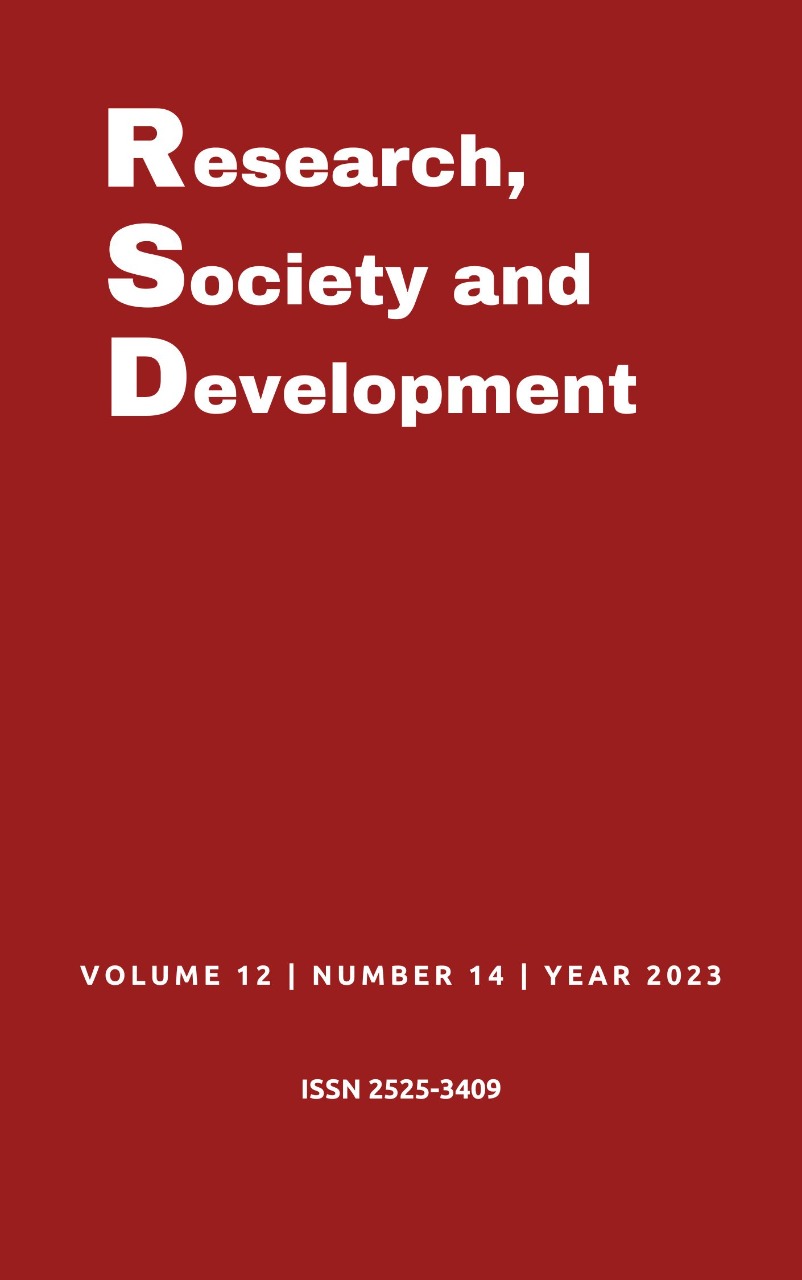Language and Education: A new look at communicability between the deaf and hearing from the philosophical Hermeneutical perspective of H.-G. Gadamer
DOI:
https://doi.org/10.33448/rsd-v12i14.44527Keywords:
Teaching, Language, Education, Hermeneutics, Deafness, Inclusion.Abstract
This research sought to carry out a study on the relationship between language and education and its implications for the communicability of deaf and hearing people based on the works “Truth and Method I” and “Truth and Method II” by Hans-Georg Gadamer. The objective of the research is to establish a new horizon of communication between deaf and hearing people based on Gadamerian theory, in order to contribute to the education and inclusion of deaf individuals in school and society. The development of the work was divided into 6 topics. In the first 4 topics, issues related to the deaf subject were addressed, with the aim of informing the reader about the peculiarities that involve this subject, such as their identity, culture, mother tongue, as well as some notes on special education and school inclusion. In the fifth and sixth topics, Gadamerian theory was discussed from a hermeneutic philosophical perspective of language. To this end, the bibliographical research method was used, through the works of Gadamer and commentators of this main author of philosophical hermeneutics. It was possible to relate the themes of education and language with the education of deaf people, as well as establishing a new perspective on communicability between deaf and hearing people in search of a common horizon of understanding. It was concluded that it is possible to establish communicability between deaf and hearing people, not based on their differences, but on their identity. Hermeneutics, as the art of interpreting and understanding, presents us through language with various possibilities of communication and understanding, requiring us to think about our prejudices, overcome our fears in order to seek the other exactly as he is, that is, a human like us.
References
Brasil. (1988). Constituição Federal. Senado Federal, 1988. http://www.planalto.gov.br/ccivil_03/constituicao/constituicaocompilado.htm.
Brasil. Lei nº 10.436, de 24 de abril de 2002. Dispõe sobre Língua Brasileira de Sinais - Libras e dá outras providências. Diário Oficial da União, Brasília, DF, 25 abr. 2002. http://www.planalto.gov.br/ccivil_03/Leis/2002/L10436.htm.
Cruz, R. J. B. (2010). Compreensão e diálogo: contribuições da hermenêutica gadameriana à educação. Ed. Universidade de Passo Fundo.
Dorziat, A. (2009). O outro da educação: Pensando a surdez com base nos temas identidade/diferença, currículo e inclusão. Vozes.
Fávero, A. G. (2011). Alunos com deficiência e seu direito à educação: trata-se de uma educação especial? In.: Mantoan, Maria Teresa Eglér (Org.). O desafio das diferenças nas escolas. (4a ed.), Vozes.
Felipe, T. A., & Monteiro, M. S. (2006). Libras em contexto: curso básico, livro do professor. (6a ed.), Ministério da Educação, Secretaria de Educação Especial.
Fernandes, S. (2012). Educação de surdos. InterSaberes.
Gadamer, H-G. (1997). Verdade e método I: Traços fundamentais de uma hermenêutica filosófica. Tradução de Flávio Paulo Meurer; revisão da tradução de Ênio Paulo Giachini. (3a ed.), Vozes.
Gadamer, H-G. (2002). Verdade e método II: complementos e índice. Tradução de Ênio Paulo Giachini ; revisão da tradução de Marcia Sá Cavalcante-Schuback. Petrópolis, RJ: Vozes.
Gesser, Audrei. (2009). LIBRAS? Que língua é essa?: crenças e preconceitos em torno da língua de sinais e da realidade surda. Parábola Editorial.
Gesser, Andrei. (2012). O ouvinte e a surdez: sobre ensinar e aprender a Libras. Parábola Editorial.
Gil, A. C. (2002). Como elaborar projetos de pesquisa. Atlas.
Goldfeld, M. (1997). A criança surda: linguagem e cognição numa perspectiva sócio-interacionista. Plexus.
Hermann, N. (2002). Hermenêutica e educação. DP&A.
Laborit, E. (1994). O vôo da gaivota. Tradução de Lelita Oliveira. Editora Best Seller.
Mantoan, M. T. E. (2003). Inclusão escolar: o que é? por quê? como fazer? Moderna.
Marques, M. O. (1995). A aprendizagem na mediação social do aprendido e da docência. UNIJUÍ.
Pereira, M. C. da C. et al. (Org). (2011). Libras: conhecimento além dos sinais. Pearson Prentice Hall.
Perlin, G. (2000). Identidade surda e currículo. In: Lacerda, Cristina Bloglia F. & Goes, Maria Cecília Rafael de (Org.). Surdez: processos educativos e subjetividade. SP: Lovise.
Perlin, G. O lugar da cultura surda. In: Lopes, Maura Corcini & Thoma, Adriana da Silva (Org.). (2004). A invenção da surdez: cultura, alteridade, identidade e diferença no campo da educação. Santa Cruz do Sul, RS: EDUNISC.
Perlin, G. (2013). Identidades surdas. In: Skliar, Carlos (Org.). A surdez: um olhar sobre as diferenças. (6a ed.), Mediação.
Quadros, R. M. de. (1997). Educação de surdos: a aquisição da linguagem. Artmed.
Savater, F. (2000). O Valor de Educar. São Paulo: Martins Fontes.
Silva, A. M. da. (2012). Educação especial e inclusão escolar: história e fundamentos. Curitiba: InterSaberes.
Skliar, C. (Org.). (2013). A surdez: Um olhar sobre as diferenças. (6a ed.), Mediação.
Strobel, K. (2018). As imagens do outro sobre a cultura surda. (4a ed.), Ed. UFSC.
Svartholm, K. (1998). Aquisição de segunda língua por surdos. Espaço: informativo técnico-científico do INES, (9a ed.) INES.
Downloads
Published
Issue
Section
License
Copyright (c) 2023 Catia Roberta de Souza Schernn

This work is licensed under a Creative Commons Attribution 4.0 International License.
Authors who publish with this journal agree to the following terms:
1) Authors retain copyright and grant the journal right of first publication with the work simultaneously licensed under a Creative Commons Attribution License that allows others to share the work with an acknowledgement of the work's authorship and initial publication in this journal.
2) Authors are able to enter into separate, additional contractual arrangements for the non-exclusive distribution of the journal's published version of the work (e.g., post it to an institutional repository or publish it in a book), with an acknowledgement of its initial publication in this journal.
3) Authors are permitted and encouraged to post their work online (e.g., in institutional repositories or on their website) prior to and during the submission process, as it can lead to productive exchanges, as well as earlier and greater citation of published work.


